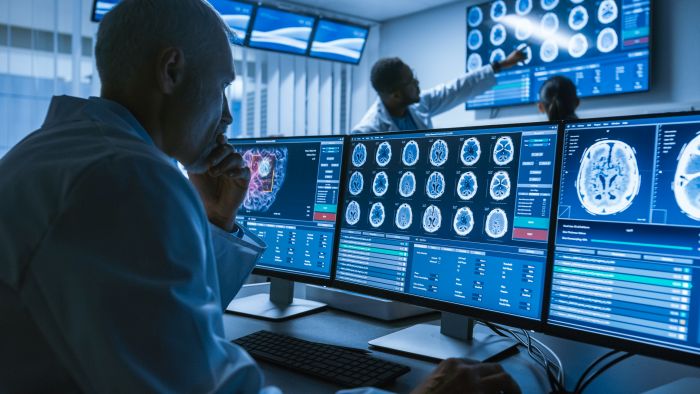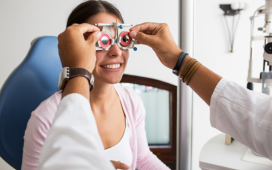Medical monitors are proven to improve breast cancer diagnosis, lung cancer, and spine fractures, especially ordinary commercial monitors. They have a greater viewing angle and luminance, are more durable, and have less noise, significantly improving accuracy and efficiency. Medical monitors can also make the radiologist’s job more productive and promote patient safety.
Stable Contrast At All Angles
Commercial monitors’ specifications often describe high levels of contrast, which may be even greater than that of medical monitors. Still, the performance of commercial monitors is inconsistent because it depends on the viewing angle. This is evident in the thoracic image below on the left. In the second image, the decentralized visualization distorts the field of view and enhances the bone structure more than the pulmonary one.
When the contrast varies with the viewing angle, the viewer’s view varies with the angle. In medical monitors, the LCD is manufactured by a unique process. In contrast, commercial monitors employ a cheaper process and are specifically adapted for central vision (which explains the high numbers in the specifications). That is, a commercial monitor has high contrast when looking at the center, but the contrast decreases quickly when the angle increases when viewing the corners of the screen or seeing another screen positioned at the side. Medical monitors can maintain contrast at greater angles.
Noise Reduction
Medical monitors which can be gotten from KARL STORZ monitors amongst others, also have different systems to reduce noise. All monitors, LCD or not, have some variability on the surface. LCD cells transmit and modulate the light produced by the backlight. Each cell is formed differently and therefore has different transmission characteristics. This manifest itself as noise.
It is clear that the noise is bad and that it is possible to reduce it by improving the image quality. The clinical effects are also evident. The spatial noise is more accentuated than the texture observed in film radiographs, has an aspect similar to that of anatomical origin, and interferes much in the diagnostic process. When correcting for spatial noise, medical monitors with luminance uniformity technology almost eliminate the noise, leaving only a slight accentuated noise that looks similar to the texture seen on radiographs.
In addition to variations in luminance, there are color variations. Since the screen has red, green, and blue sub-pixels, the color temperature may vary according to the screen area. As a result, the monitor displays noise from both luminance and color variations.







